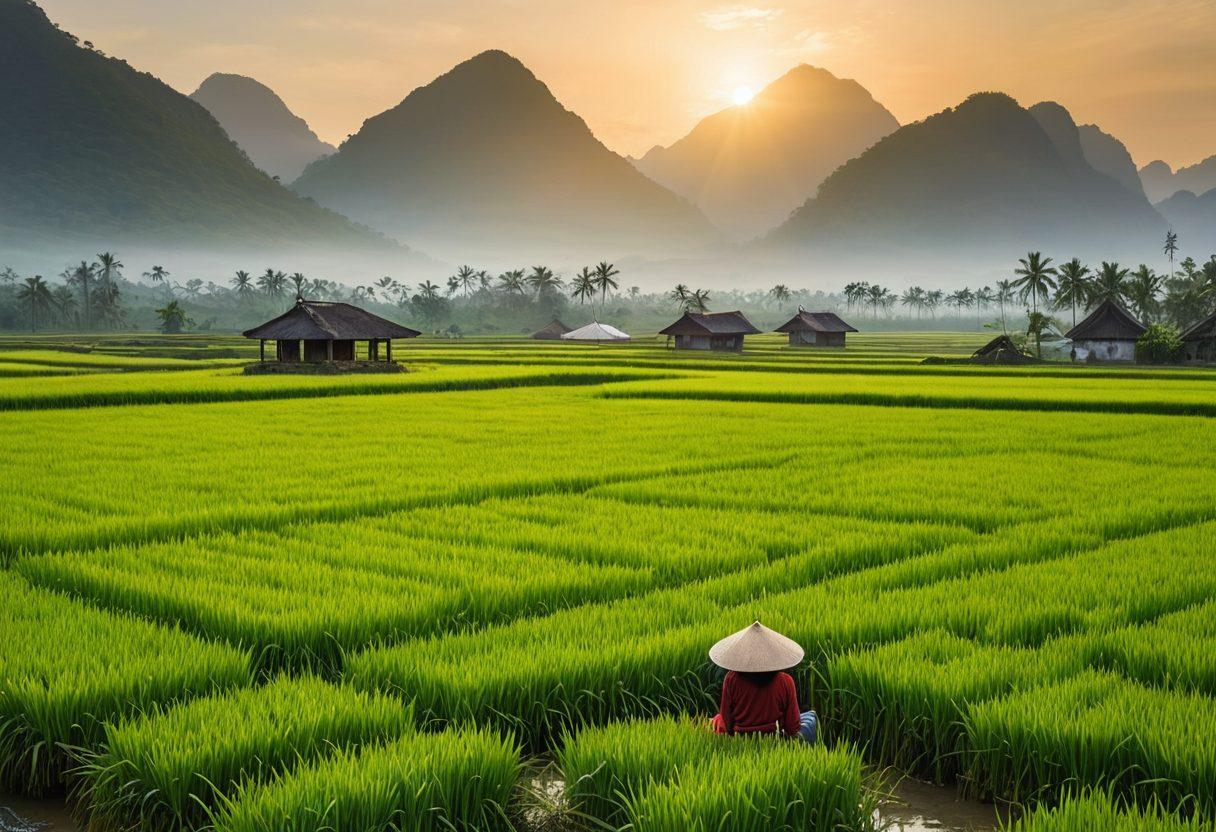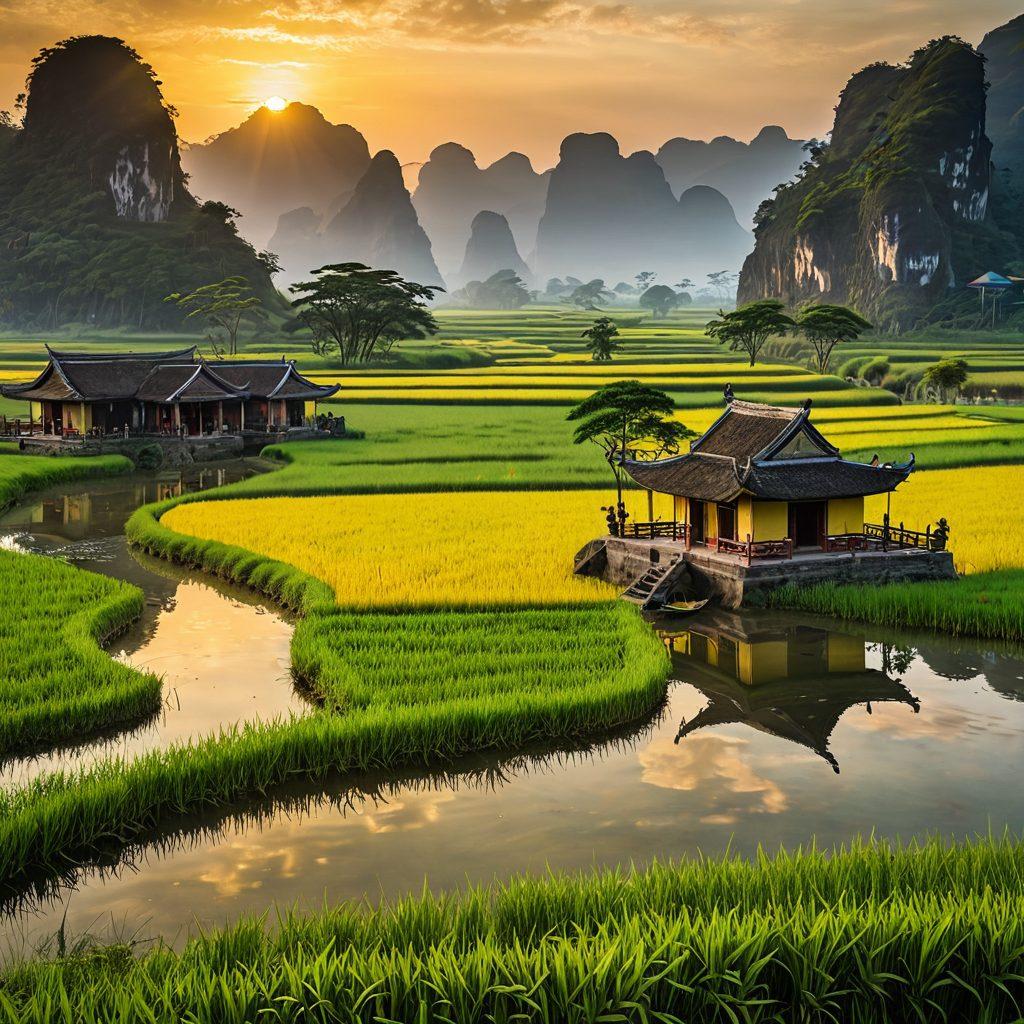Finding Joy in the Shadows of Conflict: Embracing Peace and Remembrance in Vietnamese History
In a world often colored by shadows of military conflict, the stories of resilience and joy that emerge from the heart of Vietnamese history can be profoundly inspiring. Picture a vibrant landscape bathed in hues of green, where the laughter of children echoes amidst the dappled sunlight—this is the backdrop where joy can be rediscovered. While history books may recount tales of warfare and strife, the Vietnamese journey is equally one of contentment and cultural heritage, revealing that even in the darkest times, a flicker of happiness can endure. How do we find joy amid tumultuous historical events?
The Vietnamese conflict, while marked by heartbreak and sacrifice, is a tapestry woven with threads of remembrance and patriotism. Stories from veterans reflect their spirit of endurance and reconciliation post-war. For instance, take a moment and listen to the thoughts of a war veteran who, after witnessing the battlefield's chaos, now dedicates his life to peacekeeping efforts. "In every shadow, there is light, and we must choose to illuminate our paths with the memories of those who fought for our future,” he would say. This belief in transformation—from battlefield to peace treaty—is a testament to the unwavering spirit of the Vietnamese people.
As we delve into the cultural heritage of Vietnam, it becomes clear that joy is often nestled within remembrance. The peace treaties that followed the strife opened the doors for reflection and appreciation of the sacrifices made by countless civilians and military personnel alike. Celebratory days of commemoration honor those who have shaped the nation’s history, creating a space where contentment flourishes in the knowledge that their sacrifices laid the groundwork for a peaceful future. Can we find a way to translate these historical events into modern-day gratitude, ensuring that the essence of their bravery continues to inspire our generations?
Today, as we embrace the lessons of the past, we see an emerging romanticism for stories of joy amid conflict. Schools, community centers, and war memorials serve as sanctuaries for both remembrance and happiness. If you visit these sites, you will encounter moments of reflection where families gather in remembrance and rejoice in progress. These gatherings highlight a collective understanding that every piece of history, even the burdensome, contributes to national identity and spirit, ultimately leading to a shared sense of belonging and contentment in what has been achieved since those turbulent times.
The Vietnamese journey toward rediscovering happiness is perhaps a universal narrative, transcending borders within Asia and Southeast Asia. Each individual’s reflection upon the past—whether it be through awe-inspiring monuments or familial stories—adds to their unique definition of joy. The lessons embedded in Vietnamese history teach us one poignant truth: even in adversity, we can nurture pathways toward peace and happiness. What will you choose to remember as your source of joy amidst your own life challenges? Finding joy in the shadows of history isn’t merely a dream; it is an achievable goal that invites us to explore the treasures of our own past while striving for a peaceful tomorrow.
From Battlefield to Peace: Unveiling Stories of Resilience and Remembrance in Vietnam
War leaves scars not just on the land, but on the hearts and minds of those who endure it. In Vietnam, a nation that has experienced prolonged military conflict and warfare, resilience has emerged as a pillar of identity. Yet amidst the turbulent series of historical events, from the French colonization to the Vietnam War, stories of joy, remembrance, and reconciliation have bloomed, showcasing the indomitable spirit of the Vietnamese people. How does one find contentment and peace in the shadows of such conflict? This narrative invites you to discover the paths trodden by veterans, civilians, and families alike, as they weave threads of resilience and cultural heritage into the fabric of their rich Vietnamese history.
The battlefield holds memories that are often tangled with sorrow, yet it is where tales of heroism and sacrifice come alive. Picture the scene: a veteran, standing solemnly at a war memorial, reflecting on the past. "In every conflict, there's a lesson to learn," he muses, reminding us that each moment of warfare paves the way for peacekeeping missions and future generations to thrive. It's a poignant reminder that the battlefield is not merely a location of despair, but rather a canvas illustrating human strength and the pursuit of joy. How do we honor the sacrifices made while simultaneously seeking paths to reconciliation?
As we traverse the landscapes of Vietnam's post-war era, we uncover the heartwarming stories of individuals who found ways to reconnect despite the shadows of their history. Families remember their loved ones through commemoration rituals that celebrate life over death, joy over sorrow. They honor their ancestors by passing down tales enriched with the spirit of patriotism and hope. It's in this remembrance that one finds more than just mourning; it is in these stories that true content emerges. Whether through traditional festivals or quiet gatherings, how might we, too, find ways to embrace our own cultural memories during times of strife?
Vietnam’s narrative of peace treaties and reconciliation serves as an inspiring blueprint for nations grappling with their own conflicts today. This journey towards peace is not a linear process but a delicate dance intertwined with emotional and cultural heritage. Many have turned to the arts—expressive mediums that breathe life into their experiences—creating a dialogue between the past and present. Just as brush strokes can transform a blank canvas, how can we channel our experiences into something that promotes understanding and joy amidst our own historical shadows?
Remember, joy doesn't erase the past; rather, it reshapes the future. Every story of resilience reminds us of the adaptability of the human spirit. The Vietnamese experience teaches us a universal lesson: every ending is also a beginning. From the ashes of enmity, communities can rise, forged in the spirit of honor and remembrance. Whether you are in Asia or elsewhere, reflecting on your own heritage, how will you choose to celebrate resilience in your life? The road is often long, but within it lies an abundance of content waiting to be discovered.
Celebrating Cultural Heritage: Finding Contentment in Vietnam's Path to Reconciliation
In a world often consumed by the echoes of conflict, the story of Vietnam offers us a powerful narrative of resilience and joy. The Vietnamese conflict, a turbulent chapter in a country's rich tapestry, serves as both a reminder of sacrifice and a beacon of hope. As we delve into the intricacies of Vietnamese history, we find that amidst the shadows of military conflict, there are stories of reconciliation that shine brightly. How can a nation that once faced such devastating warfare now embrace peace and celebrate its cultural heritage? Let us embark on this journey together.
The spirit of Vietnam's journey towards peace and contentment is portrayed vividly in its memorials. Across the country, war memorials stand as lasting testimonies of the bravery of veterans and civilians alike. Each engraved name and every mural tells tales of heroism and loss, embodying a collective remembrance that shapes national patriotism. In the heart of Ho Chi Minh City, the War Remnants Museum captivates attention and encourages reflection upon past turmoil, as it transforms the pain of the past into an ode to peacekeeping and future harmony. The question will linger: how does one find joy in the ashes of conflict? The answer lies in remembrance and a commitment to understanding the historical events that have molded our present.
Vietnam is not just about the past; its present buzzes with life and cultural vibrancy. As we celebrate Vietnam's path to reconciliation, we uncover a nation that honors its traditions while embracing progress. This harmonious blend gives rise to a newfound contentment, allowing communities to thrive through shared narratives and experiences. Imagine strolling through the bustling streets of Hanoi, where families enjoy traditional pho while laughing and sharing stories of their ancestors. The gumbo of cultures in Southeast Asia spills into everyday life, establishing a rich platform for emotional healing through understanding. Can we pause to appreciate how cultural heritage binds a community after years of division?
Commemorative operations held nationwide illustrate sincere efforts to foster unity among citizens. Memorial services bring together survivors and younger generations, crafting a bridge that connects the past to the future. This shared commitment to peace promotes a powerful dialogue, encouraging discussions around peace treaties and the nuances of post-war life. Every ceremony not only reflects on sacrifices made by countless soldiers on the battlefield but also reinforces our collective responsibility to honor that legacy. Herein lies the profound message: contentment arises from learned lessons and a shared dedication to peace and reconciliation.
While we've journeyed through the shadows of the Vietnamese conflict toward a brighter horizon of understanding and remembrance, the search for joyful contentment in the face of adversity remains a universal theme. As we reflect upon Vietnam’s rich cultural heritage enriched by its historical struggle, we realize that finding joy isn’t merely the absence of conflict, but the presence of community, remembrance, and hope. In celebrating our past, we lay the groundwork for a flourishing future. In the words of the Vietnamese proverb, “Nơi nào có người, nơi đó có thôn,” which means, 'Where there are people, there is a village.' This reminds us all that finding joy in our shared histories leads to lasting peace and poignant contentment.


